The Sicilian Najdorf is one of the most popular Sicilians out there to play against 1.e4, because it has a great mix of solidity with the chance of active counterplay. Today we are going to start our study about this great weapon to play to win against black against 1.e4, and it appears on the board after the moves: 1.e4 c5 2.Nf3 d6 3.d4 cxd4 4.Nxd4 Nf6 5.Nc3 a6!
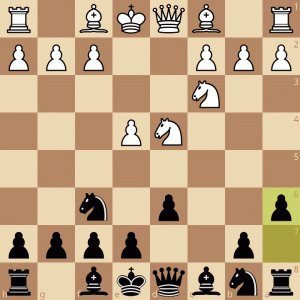
History of Najdorf Sicilian
The variant is named after the Argentine/Polish Grandmaster Miguel Najdorf (1910-1997), although he was not the first strong player to use this variant. Accordingly to the biography written by Liliana Najdorf (daughter), the idea of 5…a6 is totally practical:
“Move 5…a6 has always been useful for Black. If not played on the 5th move, it will be played on the 7th or 14th. So, being a practical person, he decided to do it right away.” (Liliana Najdorf, 1999, Najdorf x Najdorf).
General ideas of Najdorf Sicilian
But what is Black’s idea? The idea of 5…a6 is to make a useful waiting move, gaining space on the queenside and asking how White is going to develop the pieces. However, because it is a pawn move, Black loses time, and in many lines, White seeks to exploit this lack of development by Black.
White has already done everything (believe me, EVERYTHING!) to try to take advantage of Najdorf, but Black’s position has stood the test of time, being the weapon of several world champions, such as Bobby Fischer and Garry Kasparov. If it worked for them, why wouldn’t it work for you? But before delving into the specific variants, I would like to draw attention to two typical and fundamental pawn structures in Najdorf.
Structure with …e5
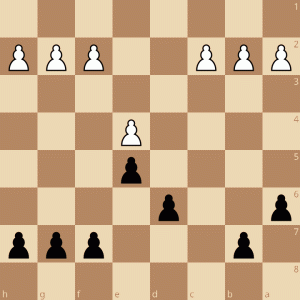
This structure is the most common in all of Najdorf.
Black plays …e5, gaining space in the center and taking advantage of having two central pawns against one of White (which is one of the Sicilian’s main ideas). On the other hand, the square on d5 and the pawn on d6 become weak, and White will try to exploit that.
Plans for white in the najdorf sicilian:
- Exploring the d5 square;
- Attacking the d6-pawn;
- Trying to perform the f4 break at the correct moment;
Fischer, Robert James – Bolbochan, Julio
Interzonal–05 Stockholm (21), 03.03.1962
White plays after 18…Nb6
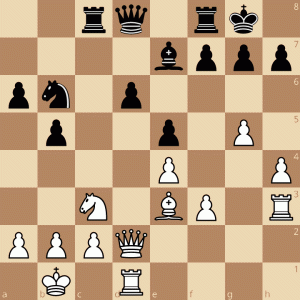
Here’s the critical moment: White plays 19.Bxb6 Qxb6 20.Nd5 The Knight is a complete monster on d5. 20…Qd8 21.f4 This is probably the dream position when White is playing this one structure.
Plans for black in the najdorf sicilian
- Make the …d5 break (eliminating the weak d5 square and the weak d6 pawn);
- Make the queenside minority attack with …b5;
- Use the c4 square (normally for a knight);
Vajda, Arpad – Szabo, Laszlo
HUN-ch08 Budapest (4), 19.11.1952
Black plays after 15.Bd3
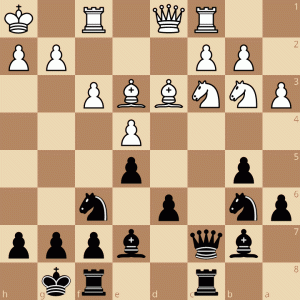
Black has a very comfortable position here: All the pieces are very well developed, and now they continue with
15…Nc4 Attacking the weak spots on the queenside, and beyond 16.Bxc4 bxc4 17.Nd2 d5 Activating the rest of the pieces.
Structure with …e6
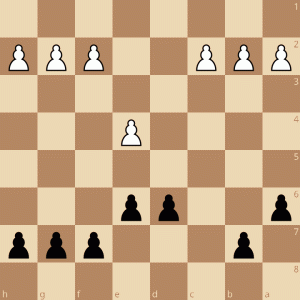
This structure appears specifically against lines with 6.Bg5 and 6.Bc4 (more details below). Black doesn’t gain as much space in the center but keeps the d5 square well-defended.
Plans for white
- Explore the half-open d-file;
- Attack in the center and on the kingside (prepare moves like e5,f4-f5, and g4-g5);
Steinitz, William-Stern, Adolf
Baden-Baden+ Baden-Baden (4), 21.07.1870
White plays after 14…Qxc3
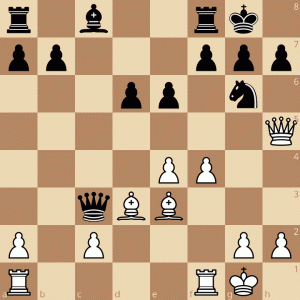
15.f5 Taking the initiative on the Kingside, White wins a good attacking game.
Plans for black
- Explore the half-open c-file;
- Minority attack on the queenside;
- …d5-break;
- Transpose to the structure with …e5;
Yates, Frederick Dewhurst – Saemisch, Friedrich
Karlsbad–03 International Masters Karlovy Vary (6), 05.05.1923
Black plays after 12.a4
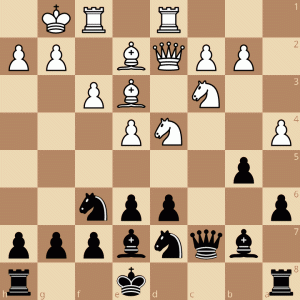
12…b4 Using the queenside minority attack, and after driving White’s knight away from the center 13.Na2 d5 Making the thematic break in these positions, certainly something you need to remember!
Theory of Najdorf Sicilian
Now that you have a baseline understanding of Najdorf’s typical pawn structures and ideas, it’s time to look at the most popular variants that White can try and I’ll guide you with recommendations against each one.
The super-aggressive 6.Bg5
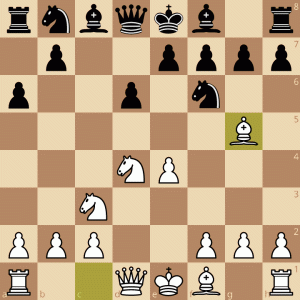
This is the main, most aggressive, and most theoretical bid in Najdorf. White develops the queenside, being able to continue with f4 gaining space on the kingside and in the center. Remember one thing: since the Bishop is on g5, don’t make the …e5 move here, because the Bishop on g5 is already on the ideal square to exploit the d5 square.
Here the most popular move for Black is 6…e6, but I would suggest the move 6…Nbd7, developing the Knight and leaving the pawn on e7 for a while. The main line follows 7.f4 Qc7 (already putting the Queen on the half-open file) 8.Qf3 h6 9.Bh4 g5!? (sacrificing a pawn in exchange for the e5 square for a knight) 10.fxg5 hxg5 11.Bxg5 Qc5 (and Black can follow up with …Ng4-Nge5,…Bg7,…Bd7 with good compensation.)
The english attack: 6.Be3
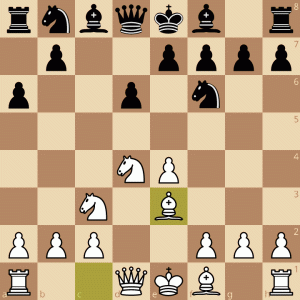
So what is White’s idea in this variation? White’s idea is to set up f3-Qd2 and 0-0-0 and start a kingside expansion with g4. This setup is very popular in several Sicilian lines.
So here we are going to play 6…e5. The main line goes 7.Nb3 Be6 (fighting for the d5 square) 8.f3 (preparing g4, and there are a few ways to counter this plan. The most modern move is) 8…h5!? (avoiding …g4) 9.Qd2 Nbd7 10.0-0-0 Rc8 (This setup for Black’s development is quite harmonic and quite useful to remember in similar positions) 11.Kb1 b5 (and Black will try to attack the queenside with …Nb6-…Qc7.)
The Fischer attack: 6.Bc4

With this development, White points to the pawn on f7 and can prepare to exploit that with 0-0 followed by f4. Also important to remember: Don’t play 6…e5 here, because with the Bishop on c4, it is especially well placed, targeting the weak square of d5.
So here we play 6…e6. The main line follows 7.0-0 Be7 8.Bg5 b5 9.Bb3 0-0 10.a3 (avoiding …b4) 10…Bd7! (10…Bb7 It is also possible, but White has the option of playing 11.Bxe6 fxe6 12.Nxe6 getting Rook and two pawns against two minor pieces, which is not always easy to assess. The main move prepares the development with …Nc6.)
The positional: 6.Be2

Generally a calmer line, preparing the 0-0 and looking for a slightly more positional game. However, sometimes White can play with Be3 and fast g4 as well.
So here we are going to play 6…e5. The main line goes 7.Nb3 Be7 8.0-0 0-0 9.Be3 Be6 10.f4 (a typical idea! Here we’ll respond with) 10…exf4 11.Bxf4 Nc6 (both sides have back pawns, and we can continue with ideas from …Rc8-…Re8-…Nc6.)
Conclusion of najdorf sicilian
We finally finish our introduction to Sicilian Najdorf! I hope you enjoyed this introductory article to Najdorf Sicilian, that it was instructive for you, and that it brings you many results! I bet if you liked this article about Najdorf, how about seeing another Sicilian who creates a lot of attacking chances, Sicilian Sveshnikov? Obviously, it’s not possible to cover everything in one article, so if you have any questions, just leave them in the comments!
Follow us on Facebook!
Join our club on chess.com!